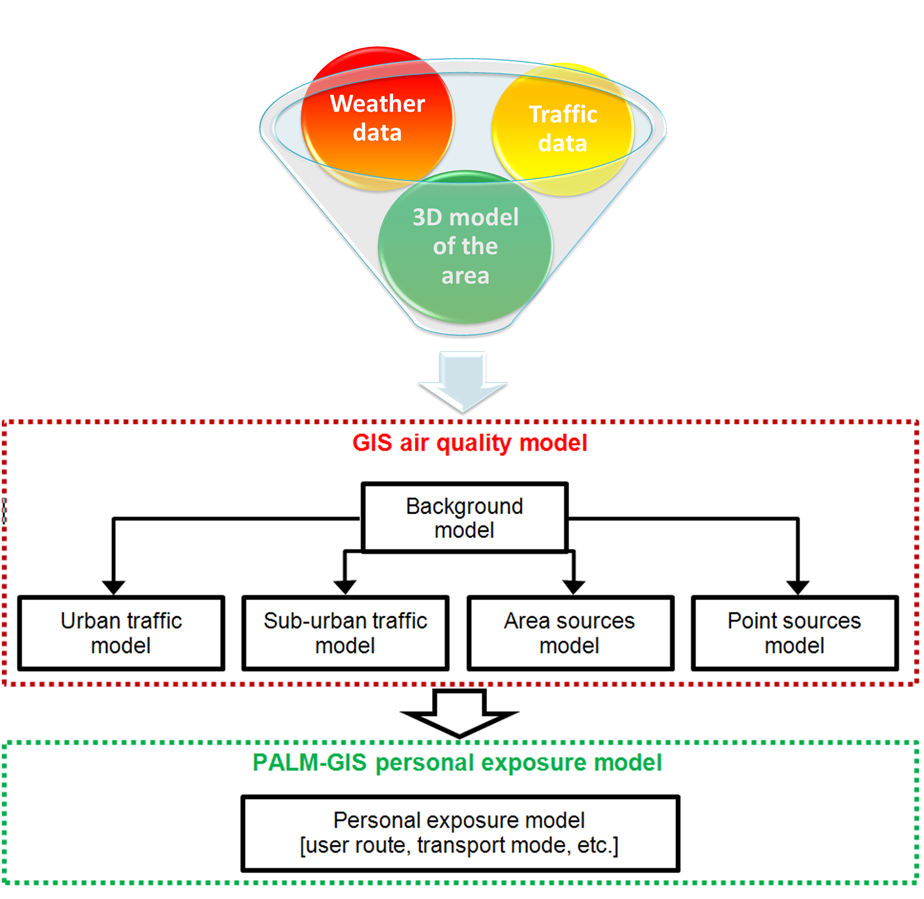Exposure to PM10 while commuting to work
The PALM-GIS exposure to PM10 model
A number of significant examples were selected to be modelled, and used as validation tests for the model. The following examples are chosen:
Performance of the model
The measured and modelled data are averaged over 5 minute periods, in order to minimise the influence of noise between the two averaged datasets compared.

Conclusions
The pollution dose is calculated for the measured and modelled data. The calculation is performed for each presented test case, and the results are presented in the table below.

Identification of the pollutant uptake by the respiratory system can determine how the resulting exposure contributes to the dose. It is clear from the results that the PALM-GIS model performs well in predicting the inhaled dose for the individuals while commuting to work using three different transport modes.
People
Department of Civil, Structural and Environmental Engineering
Francesco Pilla, Brian BroderickSponsors




